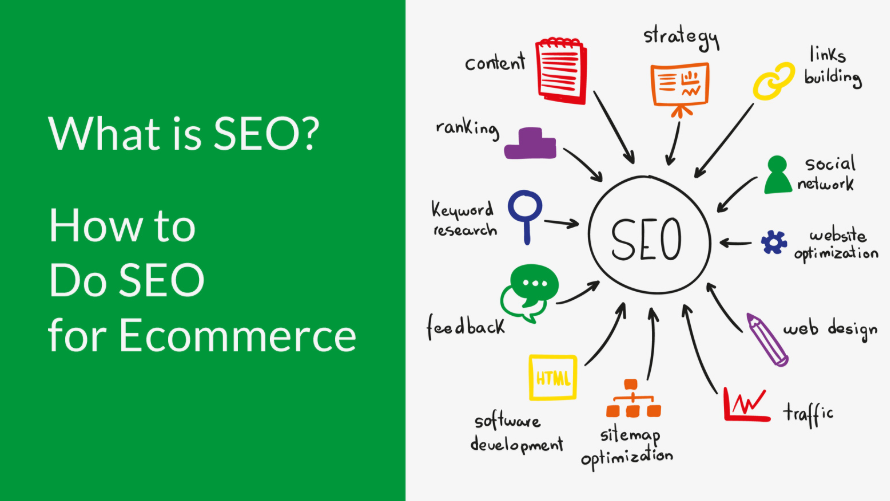In the process, you will lose sight of the objective and may see less than amazing results. So a good understanding of what SEO is, and what is not, will help you make wise decisions as you find low-cost ways to drive store-growth. This article provides you with the basic knowledge needed to do your own adaptation or to ask questions of anyone you appoint.
Initially, the cost of SEO can be higher than the economic returns, but over time SEO can be one of your least expensive marketing forms. Since search engine optimization mainly depends on the written content of your website, it can be both times consuming and expensive. However, if you can write high quality, thorough articles, and have the time to do so, SEO can be almost “independent”. I say “virtually free” because you should not underestimate the value of your time.
“SEO stands for “Search Engine Optimization”. It is the process of obtaining traffic from search results on “free,” “organic,” “editorial” or “natural” search engines.”
Optimize visibility in search engines
It is a common practice for Internet search users not to click through pages and pages of search results, so where a site ranks in a search, the slideshow is pages are required to direct more traffic to the site. The higher a website naturally ranks in the biological results of a search, the more likely it is that a site will be visited by a user.
SEO helps to ensure that the site is accessible to search engines and improves the likelihood that the site will be found by search engines. SEO is typically a set of “white hat” best practices that help webmasters and web content creators achieve better rankings in search engine results.
Optimizing Organic Search CTR
SEO is about making your search engine result relevant to the user’s search query, so when shown in search more people click on the result. In this process, snippets of text and metadata are optimized to ensure snippets of your search information so that the search query receives a higher CTR (click-through-rate) from the search results.
Is there a risk of doing SEO wrong?
You can harm your user experience if you design and write for search engines and not your customers. Driving site visitors is only one part of the success formula. This seems obvious, but if your visitors haven’t come there to buy, you don’t need them. So there is nothing you should do to slow down the traffic or slow down the buying process. Poor quality content and a spammy navigation tree are detrimental to the customer’s experience and can reduce your conversion rate.
Components of an SEO Campaign
A suitably conducted SEO campaign, defined as one, and Google, can withstand algorithmic changes made by the center around the content. While all types of content, including pictures, on-site reviews, and videos all enhance SEO, written words are the most important. Some SEO work is going on on your site, and some of it is offsite.
Search engine optimization is quite complex. Many components involve a solid SEO effort but all can be classified into one of three areas of effort.
Search optimization efforts fall into one of three categories –
- Website technical optimization – including navigational planning, speed, meta information, engine submission and more
- Content – written for both onsite and, as part of a link campaign, offsite use
- Links – both internal and from elsewhere on the site (external links)
Technical Requirements - Onsite SEO
- Your website should be optimized for speed and user experience.
- Navigation and on-site search need to be optimized for ease of use.
- URLs, meta descriptions, page titles, robots.txt and sitemap files, and canonical links must be correct.
- The code needs to install clean and open graph tags.
- On the site, pages are required to offer high quality, authoritative content that includes relevant keywords and related semantic language. Ideally, all blog pages are a minimum of 500 words. Longer is better.
- Duplicate content must be addressed.
- The site must be secure.
- Sitemaps need to connect to Google Search Console and Bing Webmaster Tools.
- An internal link strategy that combines related content to increase authority for a topic.
Material needed
I have seen many sites, which otherwise break the rules of SEO best practices, rank really well because their content is superb.
A good site is needed among the content:
- Onsite SEO – A blog for your website, including a blog that provides information about your target audience, providing high quality written content. The copy should also meet the technical requirements that help it get indexed higher but ultimately the most important factor is that it engages your audience.
- Offsite SEO – Articles, videos, social media content, infographics, and blog commentary are written on other sites, written by your team, which is your link.
- Offsite SEO – Articles written on other sites that link to your site. If the content has been written by your team, the certification belongs to another site.
E-commerce challenge
Links - Internal and Inbound (External)
Internal links are links within your website that lead site visitors, and crawlers, from page to page. A well-designed internal linking strategy makes it easy for your visitors to get the information they need. It also adds related topics and items that can support relevance and search ranking for a page.
If your website has excellent content and is technically well designed, why do you still need inbound links? Google treats inbound links as equivalent to product reviews. It is someone else’s opinion that your web page responds well to a specific query. The more “sites” you think the best answer you have, the more validation is. While Google’s algorithms change frequently, the effect of inbound links remains one of the most important factors for SERP rankings. For this reason, it is also an area that is subject to abusive practices. Google is aware of which link quality matters to you.
After more than 8 years of SEO work, I have found that by following this one rule for inbound links, websites face many Google changes and do not penalize any of the sites I have worked on has gone.
- Quality, defined by Google as reputable and reliable, inbound links are still among the most important factors that determine how well your site will rank.
- Links to poor quality sources can actually cause your site to be penalized by Google.
- A wide variety of links – including various sites that link keywords, image and video links, links that follow a “natural” pattern, and non-follow links must exist.
- Social media inbound links and content share are also factors in this.
How to get relevant inbound links
There are many ways to create and get inbound links because there are people who call themselves SEO experts. “Best is defined as the most appropriate and effective for your website. Blogger and website is art for outreach. Your request should provide an advantage to their website and audience. Just make sure the sites are high quality, ideally, you have high domain authority, and are relevant to your business.




